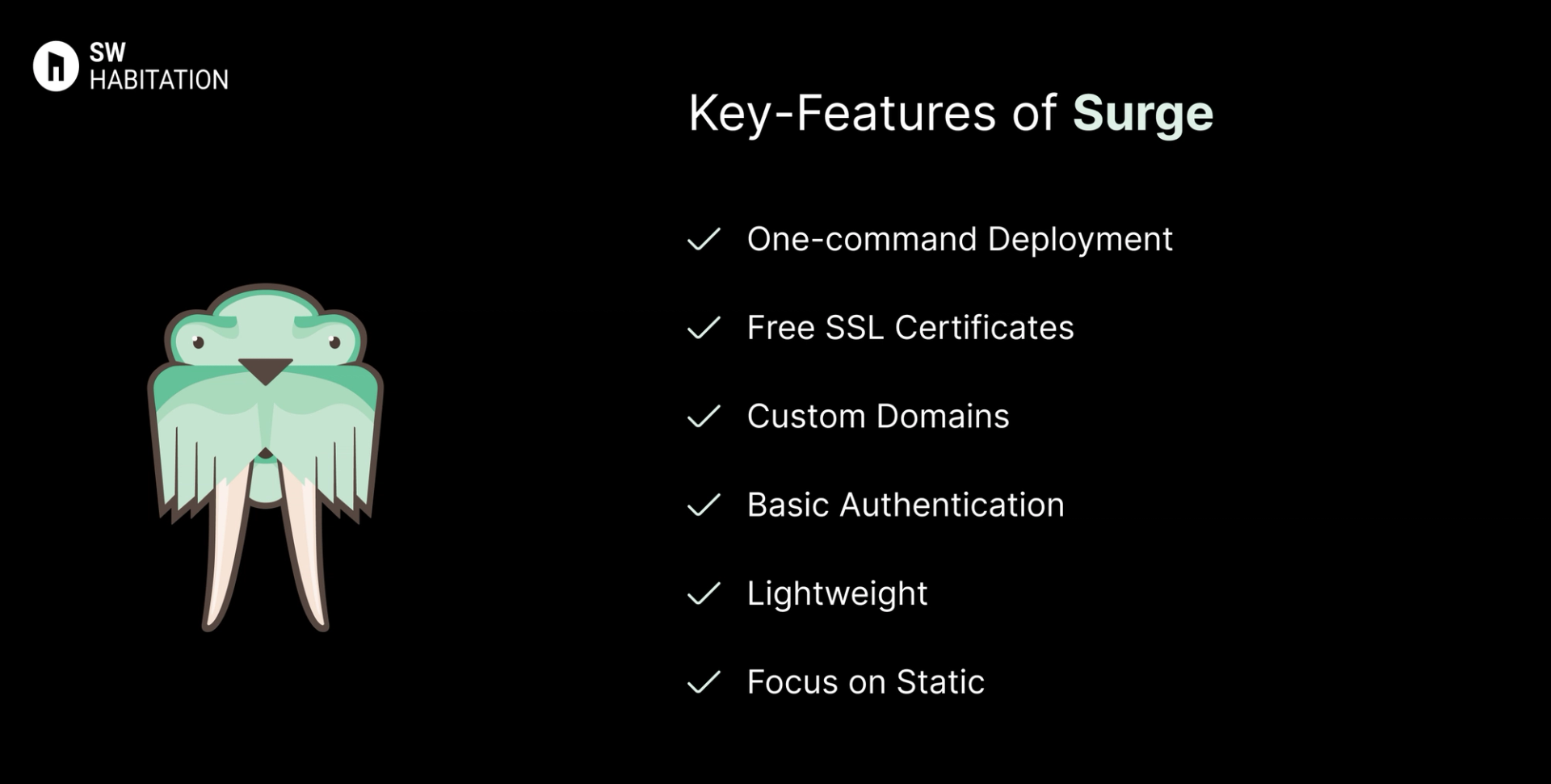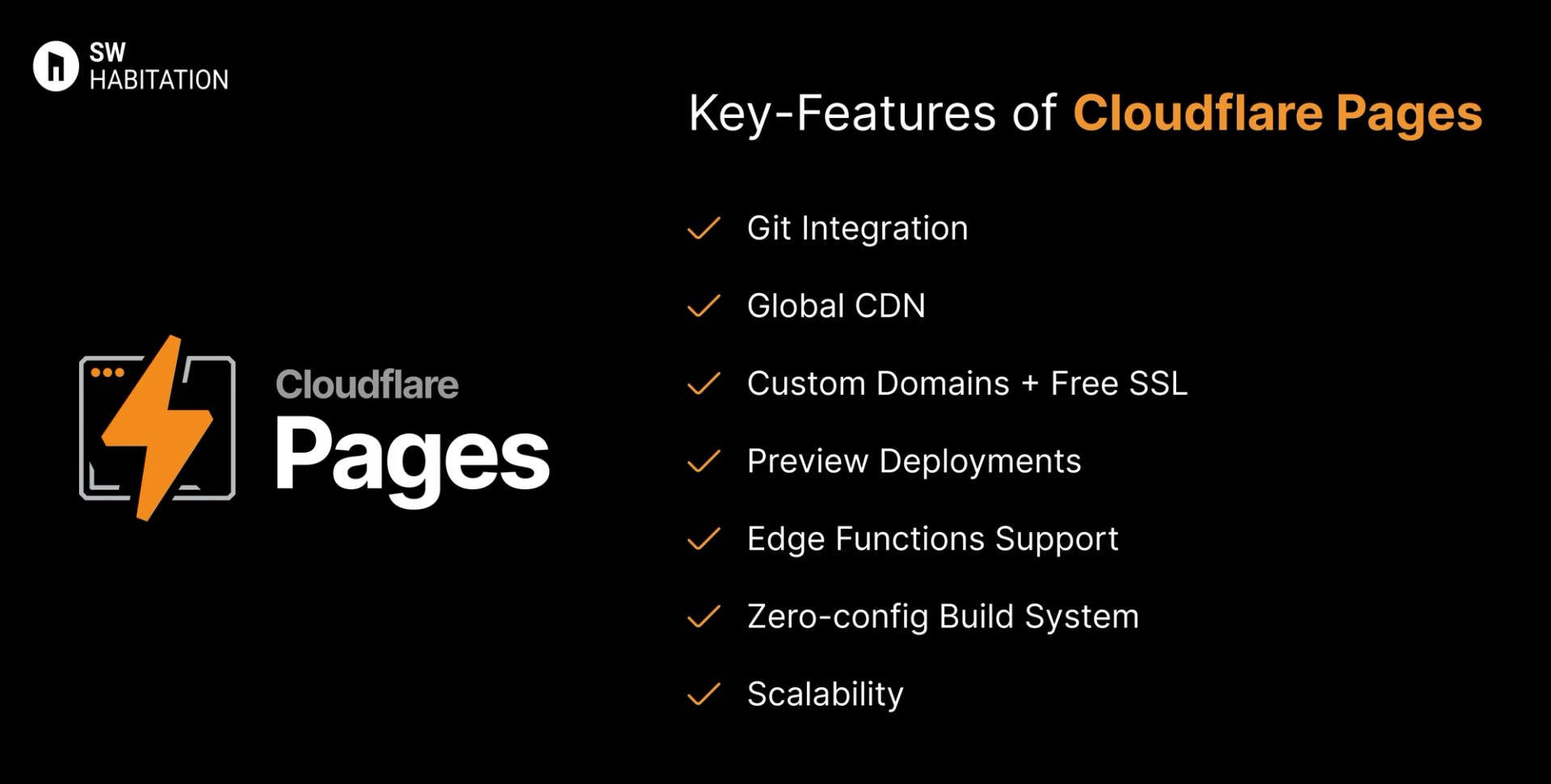Surge vs. Cloudflare Pages

Surge

Cloudflare Pages
You know when you’ve finished building your website and just want to get it online without dealing with all the techy stuff? That’s where deployment platforms help. They make it super easy to put your site live, just connect your code, click a button, and it’s up and running. No need to worry about servers or complicated setups.
They also take care of the important things like speed, security, and updates in the background. So while they handle the heavy stuff, you can focus on making your website look good and work great. It's simple, right?
What is Surge ?
Surge is a simple, command-line-based deployment platform for static websites. It’s designed for developers who want a fast, no-frills way to publish static sites with a single command. Surge is particularly popular among frontend developers who need quick deployments for prototypes, client demos, or static projects.
Key Features of Surge


- One-command Deployment: Publish a site using the surge CLI in seconds.
- Free SSL Certificates: Automatic HTTPS on all custom domains.
- Custom Domains: Easily attach your own domain to projects.
- Basic Authentication: Protect your site with password authentication.
- Lightweight: No complex setup or configuration required.
- Focus on Static: Specifically designed for static HTML, CSS, and JavaScript projects.
Advantages of Surge
- Extremely simple CLI workflow (one command deploy).
- Free SSL certificates included.
- Supports custom domains for free.
- Great for quick prototypes and static sites.
- Lightweight and beginner-friendly.
Disadvantages of Surge
- Only supports static sites (no backend, databases, or APIs).
- Lacks advanced features like serverless functions or CI/CD.
- Limited scalability compared to Netlify, Vercel, or Render.
- Documentation and community are smaller than competitors.
What is Cloudflare Pages ?
Cloudflare Pages is a fast, secure, and developer-friendly platform for hosting JAMstack and static websites directly from your Git repository. Since it’s powered by Cloudflare’s global CDN, your site is delivered closer to users worldwide, ensuring blazing-fast performance and low latency. Developers love it for its simplicity, built-in CI/CD, and edge-first architecture.
Key Features of Cloudflare Pages


- Git Integration: Connect directly with GitHub or GitLab for auto-deployments.
- Global CDN: Served from Cloudflare’s massive edge network for ultra-fast delivery.
- Custom Domains + Free SSL: Secure by default with automatic HTTPS.
- Preview Deployments: Generate shareable preview links for every pull request.
- Edge Functions Support: Add dynamic functionality using Cloudflare Workers.
- Zero-config Build System: Supports popular frameworks like Next.js, Nuxt, Astro, Hugo, etc.
- Scalability: Handles sudden traffic spikes seamlessly without extra cost.
Advantages of Cloudflare Pages
- Free plan with unlimited bandwidth.
- Extremely fast because it’s powered by Cloudflare’s global edge network.
- Automatic scaling - no server management required.
- Built-in support for serverless functions (Workers).
- Simple setup with plug-and-play Git workflows.
Disadvantages of Cloudflare Pages
- Limited backend support (mostly for static/JAMstack sites).
- Vendor lock-in if you rely heavily on Cloudflare Workers.
- Advanced configurations may require extra learning curve.
Comparison Between Surge vs Cloudflare Pages
Use Cases of Surge
- Prototypes: Quickly share demos with clients.
- Portfolios: Publish personal sites and resumes.
- Static Sites: Deploy blogs, documentation, or landing pages.
- Educational Projects: Perfect for students learning web dev.
Use Cases of Cloudflare Pages
- Open Source Projects: Free hosting for project documentation and community sites.
- Jamstack Apps: Perfect for Next.js, Gatsby, Hugo, Astro, etc.
- Portfolio & Personal Websites: Quick deploy static sites for developers, designers, or freelancers.
- Blogs & Documentation: Host Markdown or static docs with fast global CDN delivery.
- E-commerce Frontends: Fast static storefronts with serverless functions for dynamic features.
- Landing Pages & Marketing Sites: Easily deploy campaigns and product pages.
- Prototyping & Demos: Share live previews of apps during development.
Other Resources
Conclusion
Deployment platforms are a total game changer if you’re looking to launch your website quickly, reliably, and without any trouble. Whether it’s a personal portfolio, a startup site, or a growing business platform, they handle the technical heavy lifting like hosting, security, and scalability so you can stay focused on building great experiences for your users.
You’re not boxed into a single approach. Most platforms integrate smoothly with the tools and frameworks you already love, letting you deploy directly from your Git repository, preview updates, and roll back with ease. With lightning-fast performance and dependable uptime, deployment platforms simplify the path from code to production. Pick the one that aligns with your workflow, and you’re all set to launch with confidence 🚀
Frequently asked questions
Is Surge free to use?
Yes, Surge has a free plan that lets you publish sites with a surge.sh subdomain.
Can I use a custom domain with Surge?
Yes, but custom domain + SSL requires a paid plan.
Does Surge support backend or databases?
No, Surge is only for static websites (HTML, CSS, JS).
How do I deploy a site on Surge?
Install the Surge CLI, run surge in your project folder, and your site is live instantly.
Who is Surge best for?
Developers, students, and freelancers who want a lightweight, fast, static site deployment.
Is Cloudflare Pages free?
Yes, Cloudflare Pages has a generous free plan with unlimited bandwidth.
Can I host dynamic apps on Cloudflare Pages?
Mostly it’s for static/JAMstack apps, but you can add dynamic functionality using Cloudflare Workers.
Does it support custom domains and HTTPS?
Yes, you can connect your own domain and Cloudflare will automatically issue free SSL certificates.
What frameworks are supported?
It supports all popular frameworks like Next.js, Astro, Nuxt, Hugo, Gatsby, and more.
